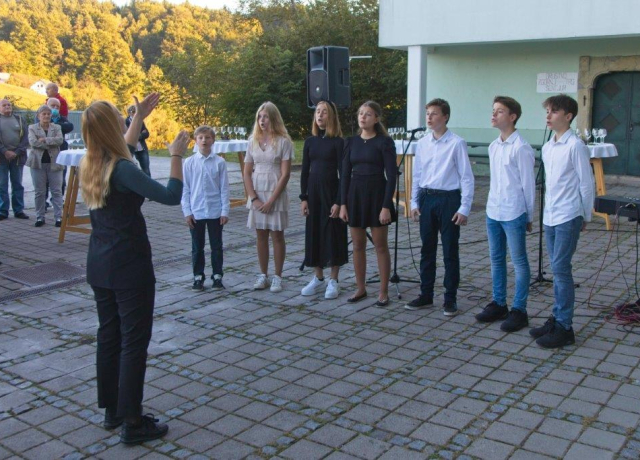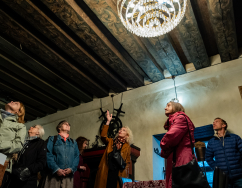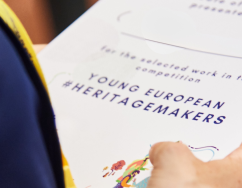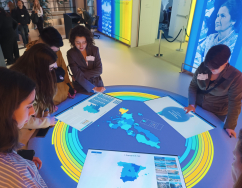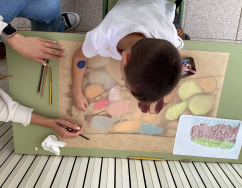European Heritage Days Article:
Unveiling Living Heritage: Inspiring Young European Heritage Makers of Tomorrow
European Heritage Days Article:
Unveiling Living Heritage: Inspiring Young European Heritage Makers of Tomorrow
Photo: Heritage for all - the vocal group sings a song by Josip Ipavec (Photo credits: Hruševec Primary School)
Young European #HeritageMakers is preparing for its 4th edition, so ahead of the competition’s launch this year on September 1st, here is a look at some of the previous Heritage Makers projects which show the many ways elements of intangible heritage have previously been approached by the youngest members of European Heritage Days communities.
Hosting artistic performances
The performing arts are one of the main domains of intangible heritage, and traditional music, dance and theatre are all encouraged as part of this year’s Living Heritage theme. In 2021, a group of seven young people attending music school in Slovenia took part in Young European Heritage Makers by forming a vocal group. The group initially recorded contemporary Christmas songs, before being invited by the regional office of the Public Fund for Cultural Activities to learn a historic piece by Josip Ipavec as part of the country’s commemorative activities to mark the 100th anniversary of his death. The song selected was Imel sem ljubi dve, which was rearranged by a young composer from Šentjur to adapt the piece from being for a male choir to a composition for a mixed group. After learning the piece during the summer months, the group performed the song at the opening of an exhibition of watercolours by painters from the Association of Historical Cities of Slovenia. Find out more about the vocal group.
Learning from other generations
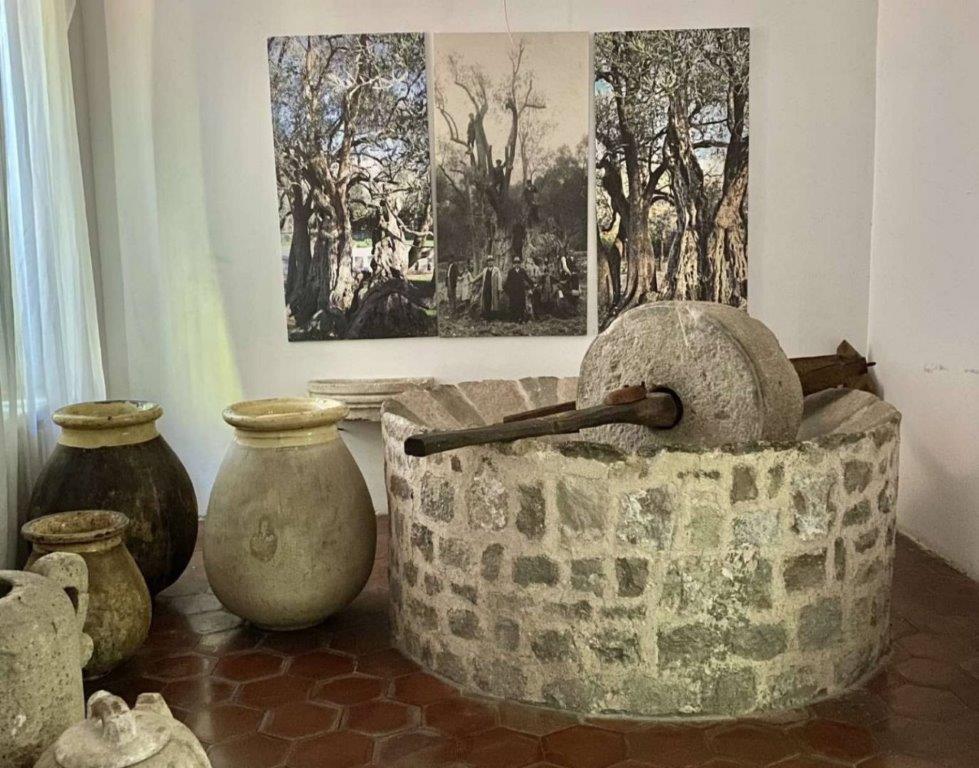
Living Heritage is in large part defined as the practices, knowledge and skills which have been passed from one generation to the next, and a Heritage Makers Story from Finland last year explored this idea in the context of culinary heritage. A group of five from the Karelia region decided to explore food and its preparation, recognising this as an important part of their culture. To do this, they visited one of their grandmas to make a dinner featuring a range of traditional foods. The students made delicacies from the area including savoury foods such as filled Karelian pasties and a root vegetable casserole, egg butter and colourful rosolli salad accompaniments, as well as a blueberry rye pie. These dishes represented both everyday cooking as well as more festive foods, so while the students had some knowledge of these, they were able to learn more about them and gain practical skills from someone with more lived experience. The group also investigated other ways information about traditional foods can be recorded and passed on, from cookbooks and written recipes as well as looking at how modern online communications can help to preserve heritage. Find out more about this culinary adventure in Finland.
Exploring the cultural significance of nature
People’s relationship with nature and place is one of the key strands of this year’s theme. One of the Maker’s Stories from 2022 explains the cultural significance of an ancient local olive tree which is estimated to be over 2,000 years old and is a protected natural monument. The tree is the symbol of the city of Bar, Montenegro and the group learnt how the tree has had a significant role in the community throughout history, from being a local meeting place to providing essential food for the winter. The importance of the tree to the living heritage of the area was further examined by looking at how it is still represented in stories, art and songs, such as the legend of a mother who protected her children there. Local customs related to the tree were also explored including the planting of new olive seedlings to celebrate marriages. Learn more about the history of the tree and the connection local residents have with it.
Discovering traditional local know-how
Living Heritage is based on knowledge and ideas transmitted through history, such as local know-how with nature. Traditional farming techniques are a part of this, and a recent project by a group of 11 year-old Young European Heritage Makers looked specifically at the importance and production of honey in North Macedonia. The country’s honeybee heritage dates back to the 6th century BC, and it is home to a unique subspecies of the Western honeybee called Apis mellifera macedonica, which is only found in the Balkans region. The group took a trip to the local library to research the cultural significance of bees to the area before visiting a farm. There they learnt about the importance of bees to the ecosystem and the skills involved in beekeeping such as how traditional beehives are woven from willow and clematis branches into cone shapes, and how farmers use the scent of lemon balm to calm the bees and make them easier to handle. Watch the video about the honeybee adventure.
Understanding cultural customs and rituals
One of the key domains of intangible heritage as defined by UNESCO includes social practices, rituals and festive events, which are an important part of cultural and community identity. Last year in Montenegro, a group of Heritage Makers decided to focus their project on local social traditions and chose to focus on the unique symbolic details and historic features of Montenegrin weddings. Dressed in traditional outfits, the group re-enacted the proceedings of a wedding, with the resulting video showcasing and explaining aspects such as the roles of the family members, the bearing and decoration of the country’s flag, and rituals such as the bride throwing a sieve onto the roof of her marital house. Other features demonstrated were the guests arriving on horses, wedding toasts and greetings symbolising the new ties between the two families, as well performances of traditional dances and songs. Watch this demonstration of historic Montenegrin weddings.
Alongside these case studies, there are many other Heritage Makers Stories available to read and watch on our website, including the selected stories from 2022, as well as more ideas for Living Heritage topics and examples of intangible cultural traditions. Find out more about this year’s Young European Heritage Makers competition including a timeline of key dates and which countries are participating in #HeritageMakers 2023 .
